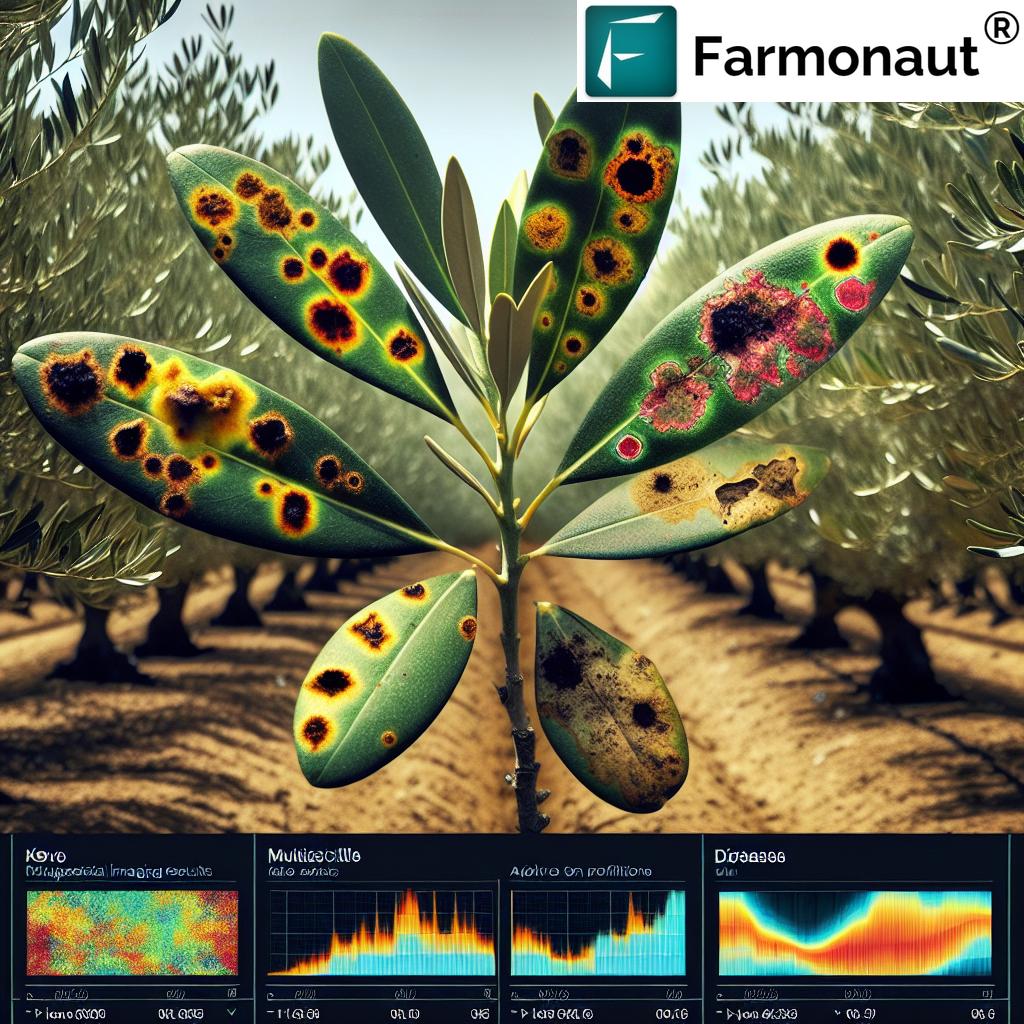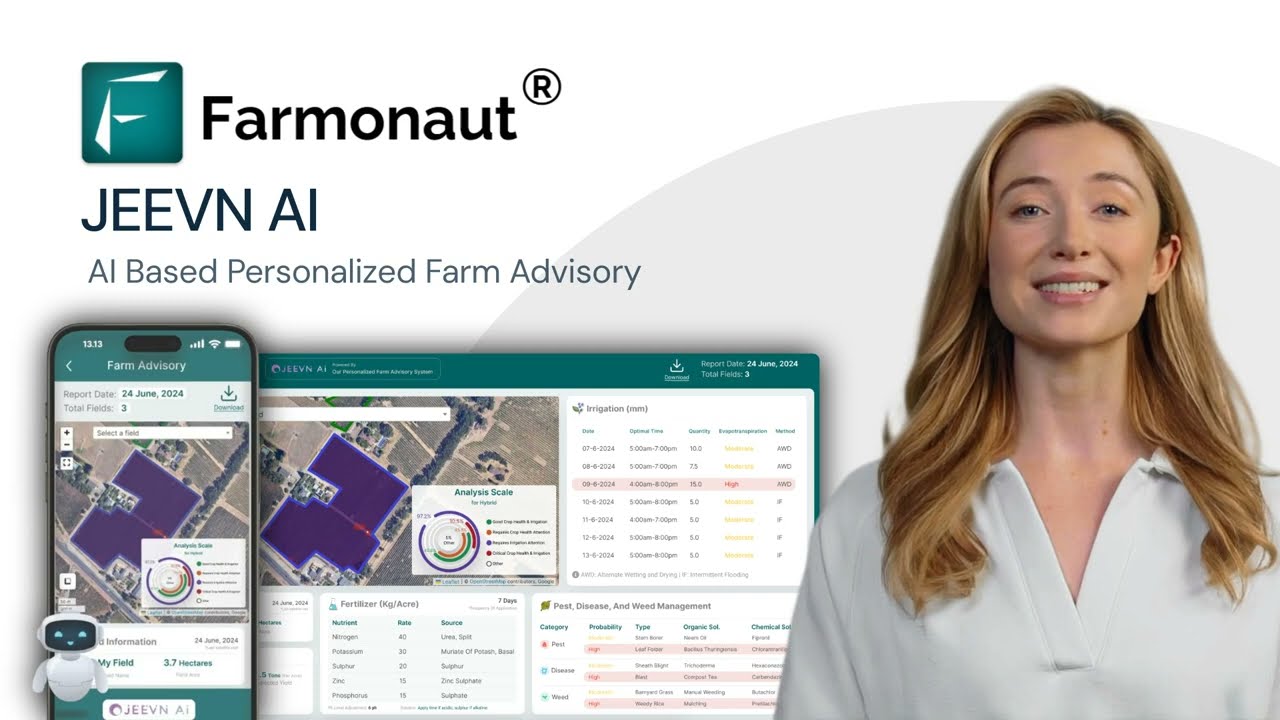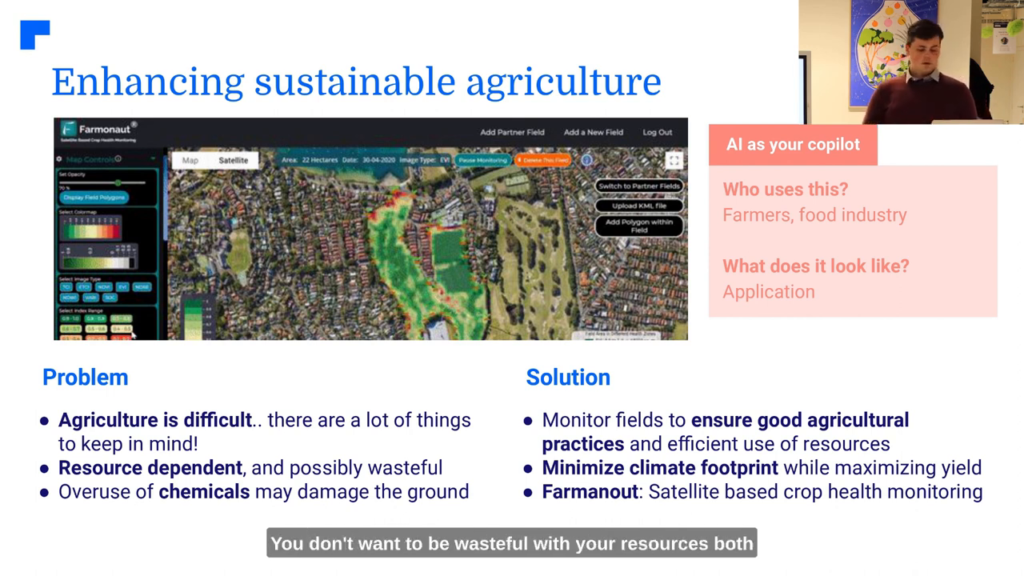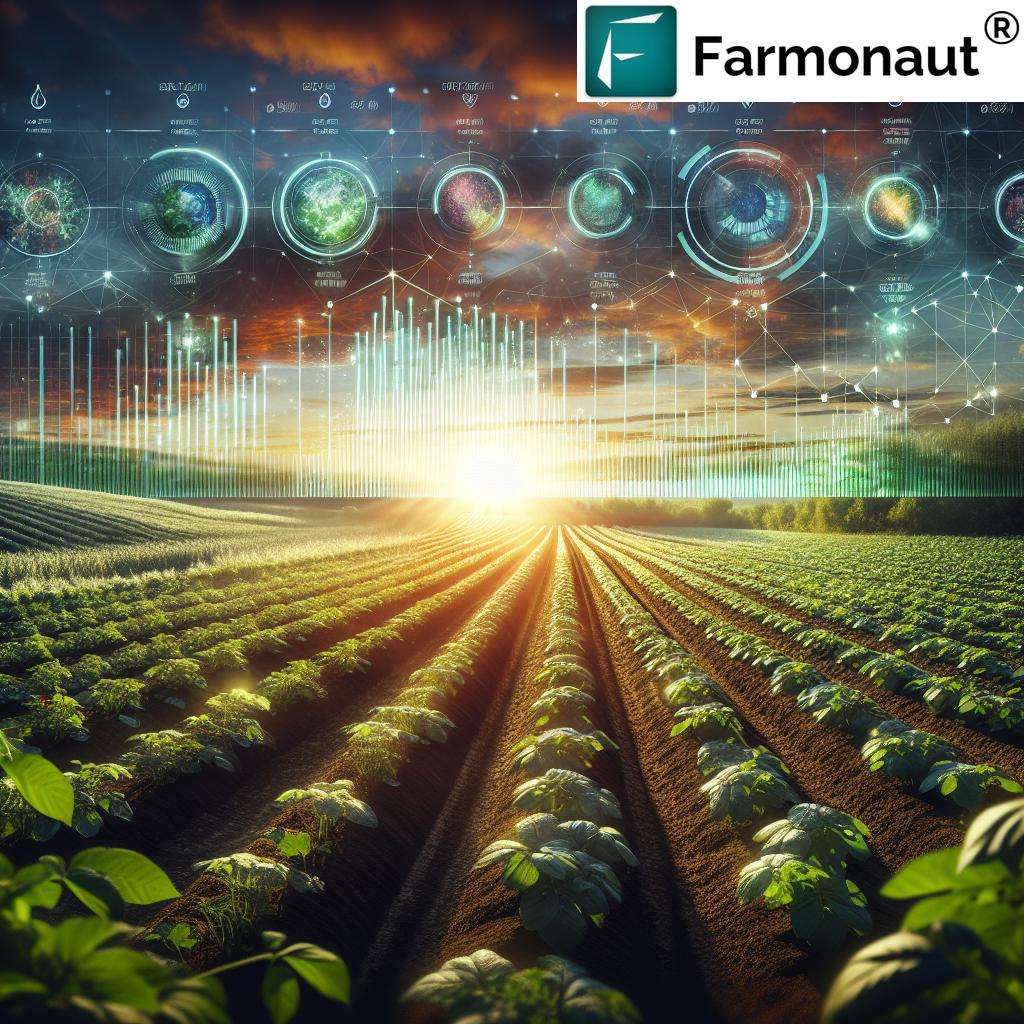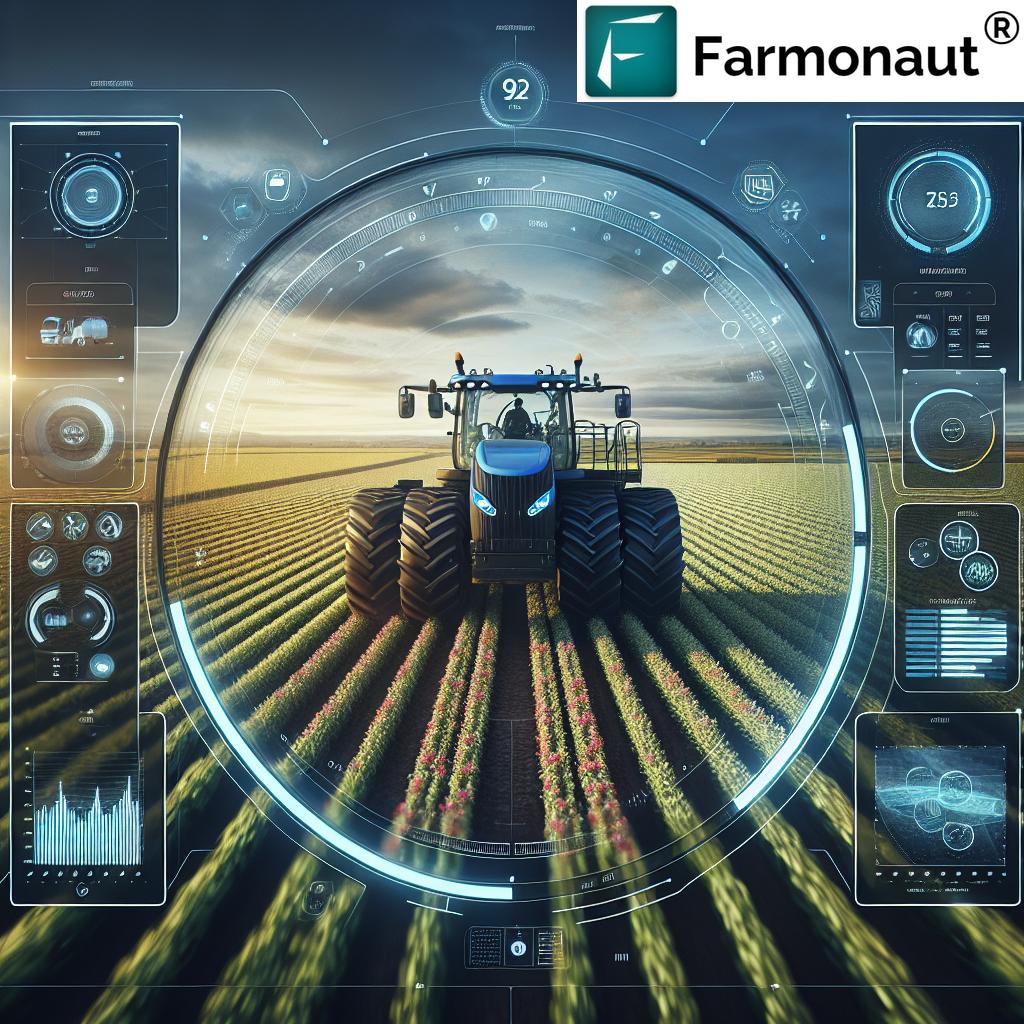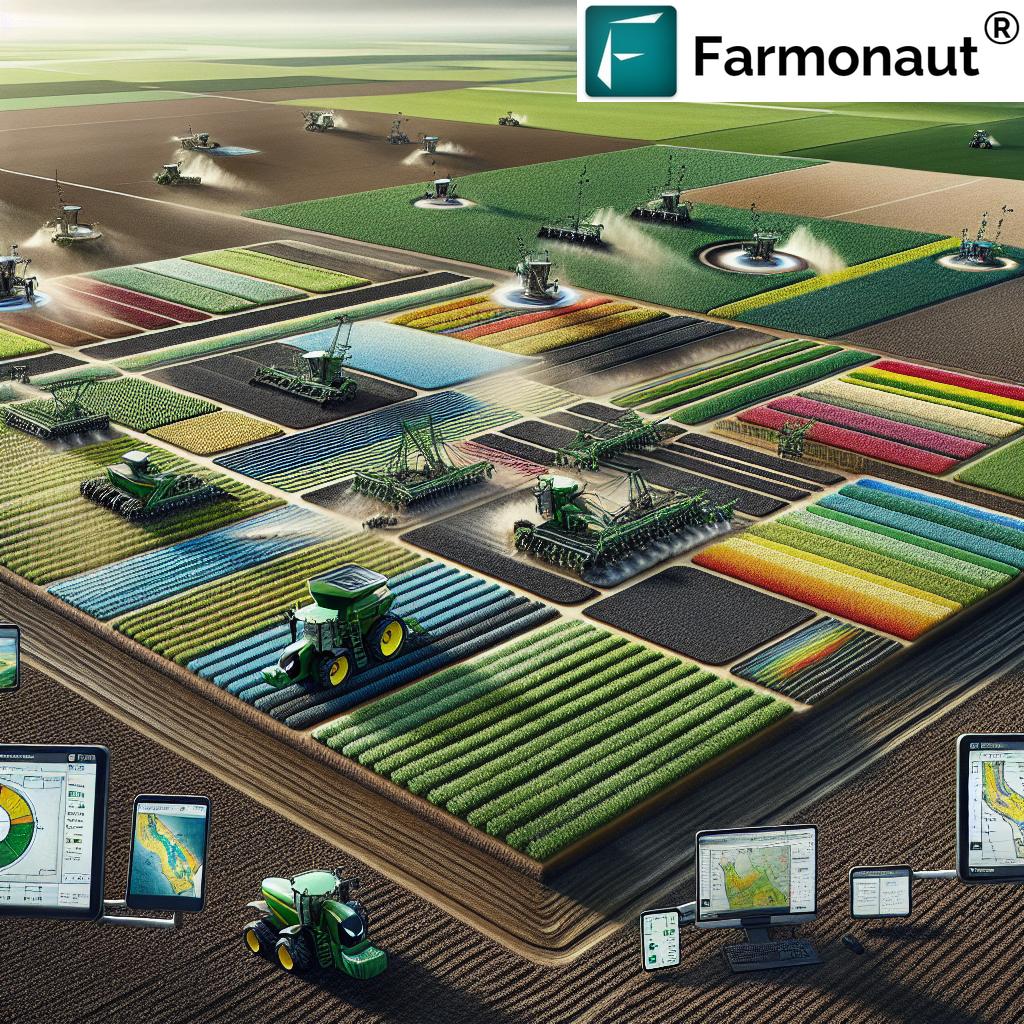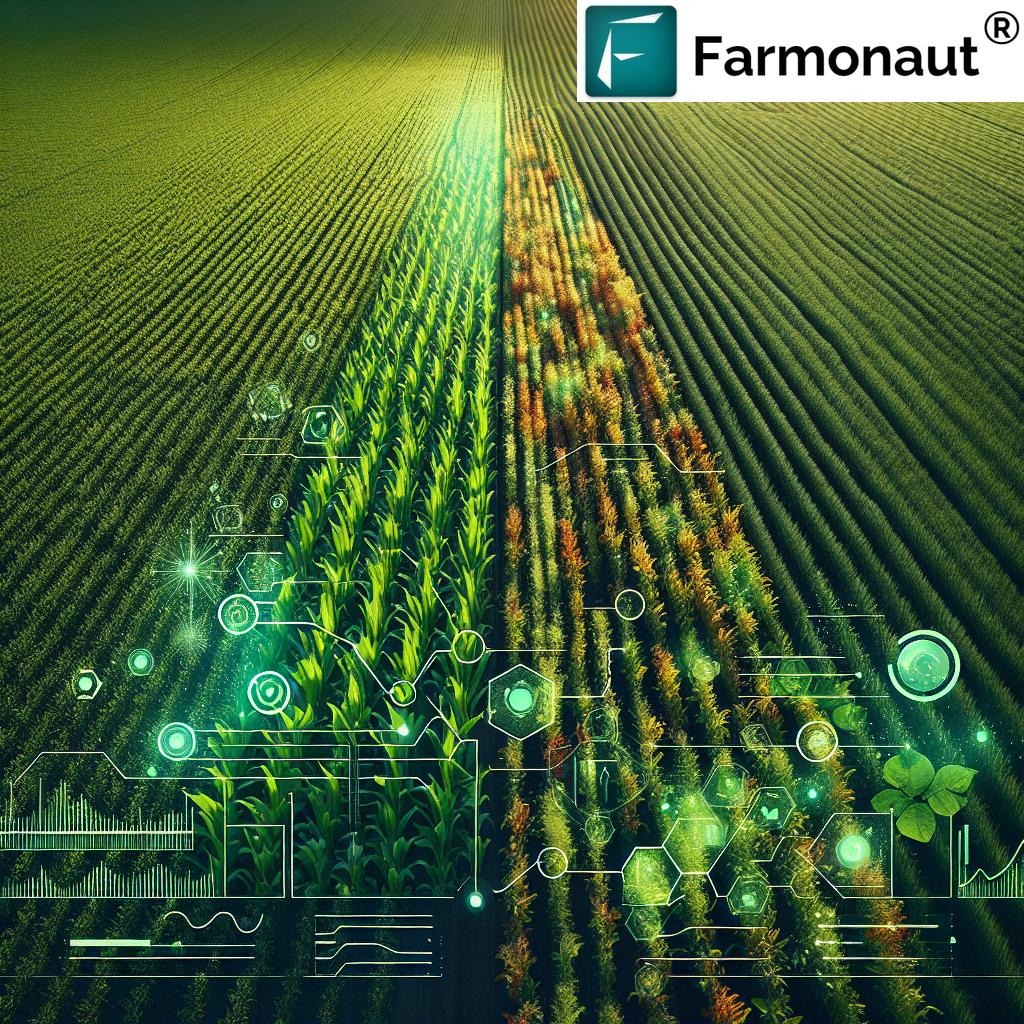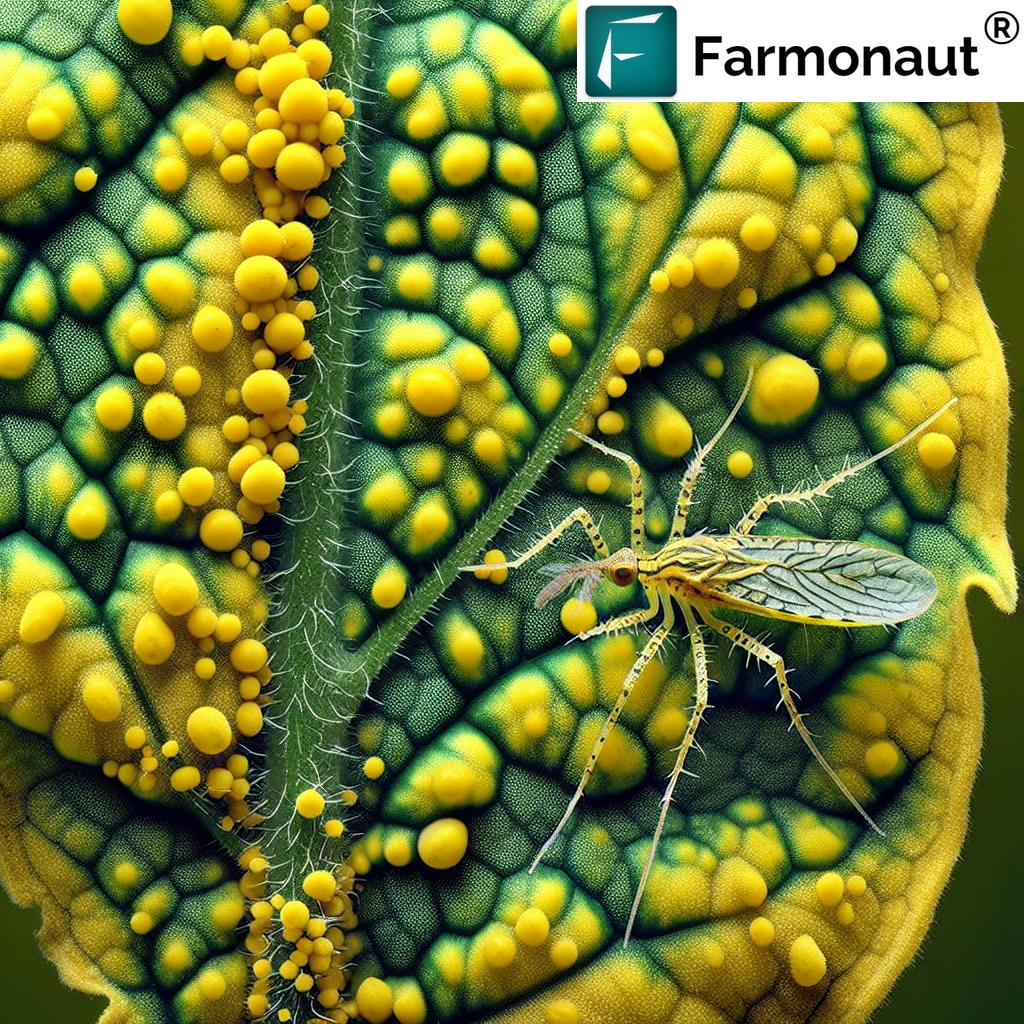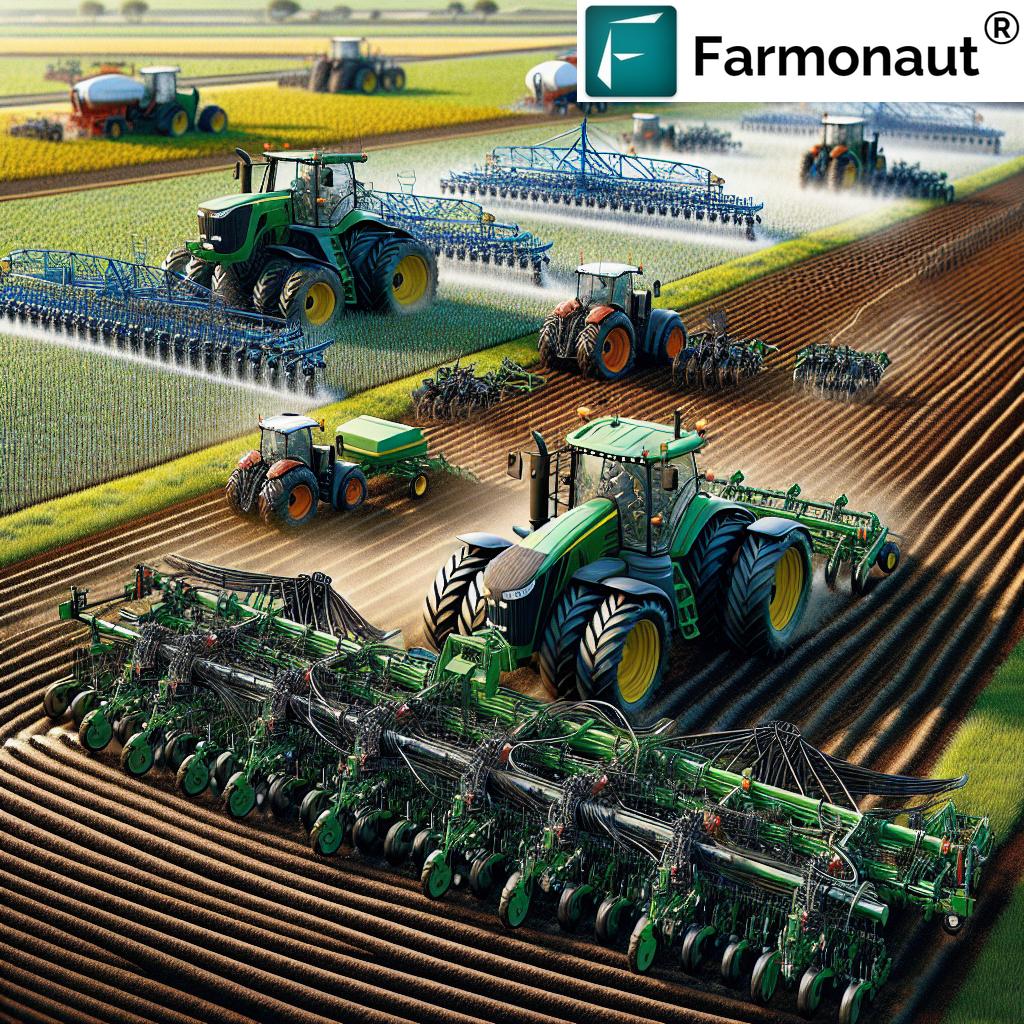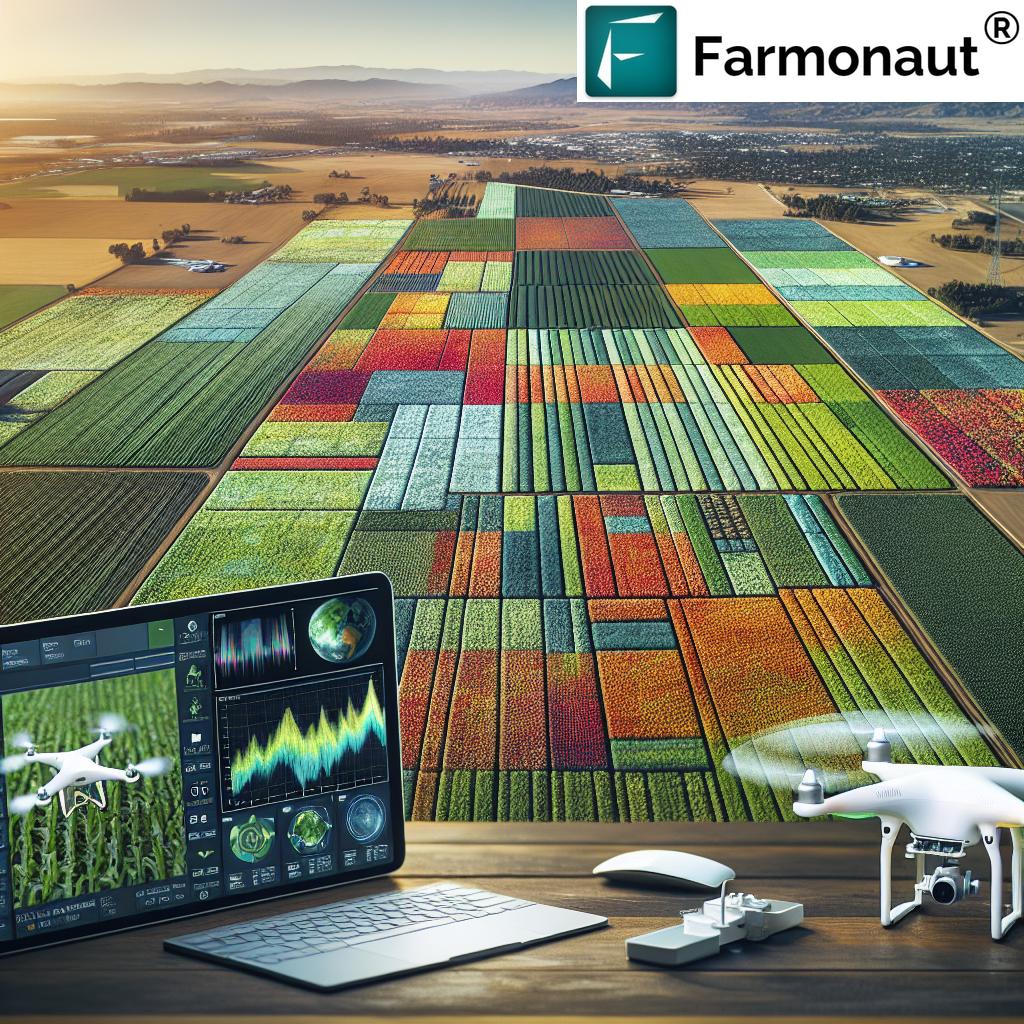AI Olive Disease Detection: 5 Ways to Improve Crop Health
“AI-powered systems can detect olive diseases up to 90% faster than traditional manual inspections.”
Introduction: AI in Olive Disease Detection
The integration of AI in agriculture has triggered a paradigm shift in how we approach crop health, particularly for the world’s cherished olive orchards. As olive cultivation faces escalating threats from various diseases, early detection and accurate diagnosis are more critical than ever. Artificial intelligence combines the power of machine learning, drone imaging for crop health, and precision agriculture technologies to deliver transformative solutions for olive disease detection.
In this comprehensive guide, we break down the latest advancements in AI olive disease detection, present five state-of-the-art methods driving results, and show why rapid disease identification is key to sustaining high yields and healthy orchards. Whether you are a grower, advisor, or agri-tech enthusiast, understanding how AI models for disease detection work is now essential for effective olive farming.
Primary focus keywords: AI olive disease detection, disease, detection, models, early, images, integration, imaging, datasets, farming, management, technologies, identification, health, leaf, spot, learning, orchards, analyze, symptoms, accuracy, detect, precision, farmers, artificial intelligence, agriculture, plant, cultivation, timely, interventions, verticillium.
Understanding Olive Diseases
Olive trees, renowned for their resilience and longevity, are not immune to a spectrum of devastating diseases. Successful olive disease detection relies first on grasping which pathogens threaten crops and how their symptoms manifest. Here are some of the most notorious diseases:
-
Verticillium Wilt (Verticillium dahliae): This soil-borne fungus attacks roots, causing wilting, yellowing, and premature leaf drop. Damage can be severe, especially in susceptible cultivars.
[Learn more: Remote Sensing Verticillium Wilt Detection] -
Olive Leaf Spot (Spilocaea oleaginea): Presenting as dark spots on leaves, this fungal disease causes defoliation and reduces photosynthesis—ultimately lowering orchard productivity.
[Read: Spilocaea oleaginea Overview] -
Olive Knot Disease (Pseudomonas savastanoi pv. savastanoi): This bacterium forms unsightly galls or knots on branches and stems, disrupting nutrient flow and weakening olive trees.
[See: Early Detection Technologies for Plant Health] - Xylella fastidiosa Infections: Though less common, this pathogen can devastate entire olive regions and is a growing concern for disease surveillance.
The presence of these pathogens not only affects direct yield but creates ripple effects—economic losses, quality reductions, and increased management costs. Thus, prioritizing early plant disease identification through AI-powered detection systems is a game changer for olive health management.
How Are These Olive Diseases Usually Detected?
Traditionally, disease diagnosis required visual inspection of symptomatic leaves, laboratory culturing, tissue sampling, and field scouting—methods that are laborious, time-consuming, and prone to human error.
Modern Alternatives: Today, AI disease detection models can analyze thousands of leaf images, sensor readings, and satellite data to identify early symptoms before pathogens cause widespread damage. This data-driven approach is revolutionizing farming.
AI in Olive Disease Detection: Revolutionizing Early Plant Disease Identification
AI in agriculture is at the forefront of combating plant health crises, using advanced AI disease detection models to deliver targeted, scalable, and cost-effective solutions for olive disease detection. Driven by data from imaging technologies, sensor arrays, and satellite feeds, AI systems excel in finding subtle disease symptoms invisible to the naked eye.
- AI models are trained on extensive datasets, often made up of labeled images of healthy and diseased leaves, which increases their detection accuracy and robustness.
- Deep learning and machine learning in farming can analyze inputs from a range of imaging technologies—standard RGB cameras, multispectral, and hyperspectral sensors.
- When embedded into smart plant disease monitoring systems, AI tools enable timely interventions, reducing losses and optimizing resource allocation.
The rise of precision agriculture technologies means that even small-scale farmers can now leverage AI, improving their ability to detect and manage diseases throughout the growing season.
“Machine learning models analyze over 1,000 olive leaf images per minute for early disease identification.”
5 Advanced AI-Driven Methods for Early Olive Disease Detection
Below, we detail five dominant AI-driven techniques that have become cornerstones of smart olive orchard management. Each approach utilizes diverse technologies, datasets, and algorithms to revolutionize how modern farming addresses disease threats.
1. Drone-Based Imaging for Crop Health Detection
- Drones equipped with high-resolution cameras (RGB/NDVI) can quickly capture images over large olive orchards, producing detailed visual records for analysis.
- AI algorithms process the images to detect patterns and identify spots, wilting, yellowing, or knot formation—all symptoms of underlying diseases.
- Studies highlight that drone imaging for crop health vastly increases scalability and timeliness, reducing time-to-detection from weeks to hours.
[Drone Tech Enhances Olive Leaf Spot Detection]
2. Multispectral and Hyperspectral Imaging in Agriculture
- Multispectral imaging captures data across specific spectral bands, such as visible, near-infrared, and red-edge. Hyperspectral imaging acquires even more granular wavelengths, further improving sensitivity to subtle physiological stress.
- AI models examine variations (chlorophyll absorption, water content, etc.) invisible to the human eye, which can indicate the very earliest stages of infection.
- AI-enabled analysis highlights deviations from normal spectral signatures, pinpointing abnormalities linked to infections like Xylella fastidiosa or Verticillium wilt.
[Xylella Detection via Multispectral Imaging]
3. Machine Learning Models for Disease Detection
- Machine learning in farming harnesses algorithms such as convolutional neural networks (CNNs) and Single Shot Detectors (SSD) to recognize complex patterns in thousands of training images of olive leaves and fruits.
-
These models can be quickly trained on labeled datasets to classify images as healthy or symptomatic (leaf spot, knots, wilt). Detection rates as high as 96% accuracy have been reported.
[SSD for Olive Peacock Spot Recognition] - Once trained, models operate at lightning speed, analyzing sensor readings and images in real-time, guiding precision interventions.
4. Satellite-Based AI Crop Monitoring Platforms
- Satellite remote sensing, combined with AI, delivers panoramic, multispectral images of vast olive cultivation areas at regular intervals.
- Advanced plant disease monitoring systems like those powered by Farmonaut harness these feeds to identify disease clusters, track progression, and even predict outbreaks based on environmental indices (e.g., NDVI, soil moisture).
- With web, API, and mobile access, such tools democratize crop health detection and advisory services globally. Farmonaut’s Jeevn AI Advisory System is an example, integrating data with actionable insights for farmers.
5. IoT Integration and Sensor-Based Disease Detection Methods
- Internet of Things (IoT) devices—such as soil probes, leaf wetness sensors, and environmental monitors—feed continuous data on crop conditions.
- AI algorithms analyze these streams, flagging patterns or anomalies that suggest the onset of disease.
- Integration with field robotics and automated sprayers enables real-time, targeted intervention, optimizing pesticide/fungicide use while minimizing waste and environmental impact.
- IoT-based approaches, leveraging AI’s ability to learn from diverse inputs, are scalable from single orchards to large regional farming networks.
AI Disease Detection Methods: Comparative Table
| AI Method | Estimated Detection Accuracy (%) | Required Technology | Speed of Diagnosis | Impact on Crop Health |
|---|---|---|---|---|
| Drone-Based Imaging | 85-92 | Drones, HD Cameras, AI-Enabled Software | Within hours | Rapid field coverage, early hotspot identification |
| Multispectral/Hyperspectral Imaging | 90-97 | Multispectral/Hyperspectral Sensors, AI Analysis | 2-12 hours | Detects pre-symptomatic stress, localized interventions |
| Machine Learning Models (e.g., CNN/SSD) | 92-97 | Large Image Datasets, Labeled Data, ML Frameworks | Seconds to minutes (after training) | High precision, instant triage, scalable to large orchards |
| Satellite-Based AI Monitoring | 83-90 | Satellite Imagery, AI Advisory Systems | Daily/weekly (depending on satellite pass) | Macro-level monitoring, resource optimization |
| IoT Integration & Sensor Networks | 88-95 | Soil/Leaf Sensors, Wireless Networks, Edge AI | Real-time (seconds/minutes) | Continuous tracking, rapid alerts, preventive action |
Note: Detection accuracy rates and diagnosis times are estimates and may vary with environment, dataset quality, and model training.
Key Benefits and Challenges of AI Integration in Olive Disease Detection
Benefits of AI-Driven Detection
- Early Identification: AI systems can detect disease symptoms before they are visible to human scouts, allowing for timely interventions that reduce spread and crop loss.
- Unmatched Precision & Accuracy: AI models analyze complex datasets, decreasing the risk of false positives/negatives, and boosting overall diagnosis reliability.
- Reduced Labor & Cost: Automated detection with drones, satellites, and IoT reduces the need for intensive manual scouting, bringing down operational expenses.
- Scalability: AI is highly scalable, capable of monitoring entire regions or individual trees, making it ideal for both smallholders and industrial-size farming operations.
- Objective Data-Driven Decisions: Removing subjective visual assessment improves trust in management strategies and optimizes yields.
- Blockchain-based traceability—such as offered by Farmonaut—adds transparency to crop management and health data, improving trace-back and food security. Learn more about product traceability here.
- Satellite-based carbon footprinting delivers environmental insights to ensure sustainability in disease management. Discover carbon footprint tracking for agriculture here.
Challenges to Overcome
- Data Quality and Diversity: Accurate AI models rely on vast, unbiased datasets for training. Variations in olive cultivar, regional climate, and disease expression demand diverse image datasets.
- Model Generalization: A model trained on Spanish olive varieties, for instance, may not immediately generalize to Italian or Greek orchards without dataset augmentation.
- Technology Integration: Farmers may face hurdles in adopting AI tools—both in terms of initial cost and workflows. Education and support from trusted technology providers is essential.
- Continuous Updates: As field conditions shift, AI models must be retrained and updated with new sensor readings and disease variants.
- Network Requirements: In remote rural areas, internet connectivity remains a limiting factor for cloud or real-time data transfer. Edge computing is an upcoming solution.
Interested in integrating real-time AI-powered olive disease detection into your own platforms or agricultural projects? Explore our Farmonaut API and developer documentation. Analyze spectral bands, satellite images, and crop health indices programmatically for tailored agricultural solutions.
Farmonaut: Integrating AI for Real-Time, Scalable Olive Crop Management
At Farmonaut, our mission is to make precision agriculture technologies accessible and affordable for farmers worldwide. We empower users with advanced AI-based advisory systems, satellite monitoring, and resource management tools that bring cutting-edge crop health detection to every level of olive cultivation—from individual growers to government agencies and agribusinesses.
- Satellite-Based Crop Health Monitoring: We leverage multispectral satellite images and AI algorithms to scan orchards for early signs of disease, stress, or nutrient deficiencies. This enables timely interventions and maximized yields.
- Jeevn AI Advisory System: Our AI-driven personalization engine analyzes satellite data, weather forecasts, and user-provided inputs to generate precise recommendations. With integration via Android/iOS/web/API, real-time crop alerts are always at your fingertips.
- Blockchain Traceability: Every step of your olive oil’s journey stays transparent, secure, and authenticated thanks to our product traceability tools. Enhance consumer trust and food safety compliance.
-
Resource & Fleet Management: Effectively manage agricultural logistics with our fleet tracking and resource optimization solutions—vital for large-scale olive plantations.
See our fleet management platform for more details. - Crop Loan & Insurance Verification: Our satellite-based verification helps unlock crop loans and insurance, supporting farmers’ economic security. Read about our crop insurance services.
- Large-Scale Farm Management: Utilize Farmonaut’s Agro Admin App for streamlined monitoring, user management, and advisory dissemination for extensive farm networks.
- Scalable & Mobile-Ready: Our app suite is mobile-responsive and user-centric, letting farmers monitor their olive crops anywhere, anytime. Try our main app now!
Ready to transition your olive cultivation into the future? See Farmonaut’s flexible packages below or access immediately via our web app. No expensive hardware needed—just data, actionable advice, and superior crop management!
For forest, plantation, and crop advisory using satellite AI: Try Farmonaut’s smart farming assistant.
Future of Precision AI Technologies in Olive Disease Detection
- IoT-Driven Farm Networks: Integration of distributed IoT sensors with AI platforms delivers real-time, continuous monitoring and predictive alerts, making plant disease management proactive rather than reactive.
- Edge Computing: As high-speed internet may not be universal in rural zones, processing data locally (“edge”) will reduce latency and keep AI-powered detection available offline—ideal for remote orchards.
- Explainable AI: Emerging AI models will provide human-readable rationales for their predictions, fostering farmer trust and easier integration into traditional farming practices.
- Expanded Datasets: As open data sharing increases, disease detection models will generalize better, supporting cross-regional / global olive health management.
- Holistic Crop Health Management: Future AI monitoring platforms will seamlessly connect irrigation, pest, disease, and resource management for complete farm optimization.
Frequently Asked Questions (FAQ): AI Olive Disease Detection
What is olive disease detection?
It’s the process of identifying symptoms and patterns of disease—such as spots, wilting, leaf yellowing, or knots—affecting olive trees. Using AI in agriculture, farmers can now spot these threats early and respond rapidly.
How does AI improve olive disease detection?
Artificial intelligence improves detection by analyzing large, diverse datasets (images and sensor readings) to recognize subtle disease symptoms early, increase diagnostic accuracy, and automate the decision-making process.
Are these AI models affordable for small-scale farmers?
Absolutely. AI-driven disease detection is accessible via mobile and web apps. Platforms like Farmonaut offer subscriptions with scalable packages, removing cost and hardware barriers for individual farmers.
What sort of data is used by AI models for olive disease detection?
Multispectral and hyperspectral images, standard color photos (RGB), sensor readings (leaf wetness, humidity, temperature), and satellite feeds are all used. Models are trained to recognize disease-linked changes in spectral analysis, color, and leaf morphology.
How fast can AI systems detect diseases compared to manual inspections?
AI-based detection is up to 90% faster, analyzing thousands of images or sensor inputs per minute and providing actionable alerts within hours or even seconds.
Can farm advisory and management be automated using these technologies?
Yes! Solutions like Farmonaut’s advisory apps automate disease alerts, resource guidance, and record-keeping, closing the loop from detection to actionable management.
Conclusion: Optimizing Olive Yields & Health with AI-Powered Detection
The application of artificial intelligence in agriculture is rewriting the rulebook for early plant disease identification and management. For olive cultivation—a cornerstone of Mediterranean agriculture—AI olive disease detection now means faster, more accurate, and data-driven decisions.
- Multi-modal AI methods (satellites, drones, sensors, models) enable early symptom detection from leaf spots to branch knots—long before diseases become visible in the orchard.
- Farm management platforms now support individual farmers and large agribusinesses in safeguarding yields, minimizing economic losses, and practicing sustainable agriculture.
- Farmonaut—by offering satellite, advisory, and blockchain solutions—is committed to making AI-driven crop health management accessible to all, regardless of scale or geography.
Ready to safeguard your orchards and optimize yields? Harness the power of AI to keep your olive crops healthy, resilient, and productive—now and for the future.


